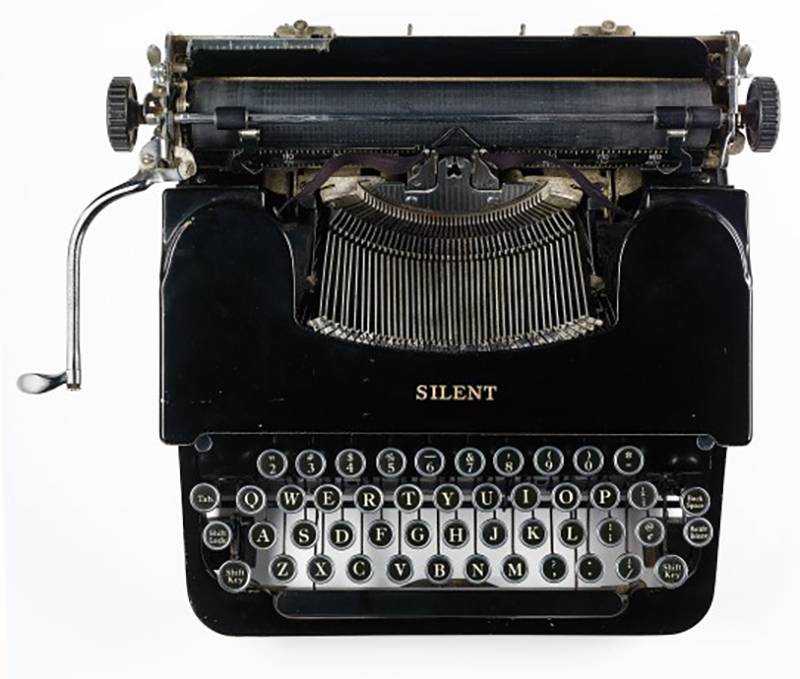This exhibit had me at the words “writers and their tools.” And as a writer/reader/fine pen enthusiast and collector of current and extinct technologies, the deal was sealed with the image of a shiny black Corona Silent Typewriter.
While the published book may be the prize, nerds like me are also fascinated by the range of tools used along the way. “Writers & Their Tools: Parchment – Paper – Processor” creates a sacred space where we can stand in a state of creative communion. Standing beside the very instrument that delivered From Here to Eternity, written by Robinson, Illinois native James Jones, closes the gap between present and past, inviting us to imagine Jones’ fingers clicking along the keys of his Royal Portable. Here, the ordinary becomes transcendant.
Curator Ruthann Miller was gracious enough to chat with me before giving me a private tour of the exhbiit. Herewith I share the highlights of our discussion.
Smile Politely: I’m curious about what led up to this exhibit?
Ruthann Miller: So, it began with going through the collection that we have and walking through the shelves, opening up the boxes and digging in. I was looking for what type of realia we had, realia being 3D objects we have in the collection, like typewriters, mugs, board games. We have a theatre collection, so we have costumes and props and those types of things. So things that aren’t archival materials or aren’t books. Sometimes people don’t associate objects with a special collections library. But a lot of special collections libraries do have objects as well as books and archival material.
I came back out with a list and realized that we had six typewriters; and, everyone seemed excited about the typewriters. And {today} so many people have no experience with using typewriters. {Both Ruthann and I sigh} So being able to showcase them. And, the Sandberg typewriter is so pretty. It’s just a beautiful thing.
Editor’s note: I begin to realize that direct experience with any given technology is the ultimate litmus test for a generation gap. Bank tellers vs. ATM vs. Zelle. Phones with rotary dials that never left the kitchen wall. The delicate dance of changing a typewriter ribbon, or, years later, installing a new font ball. Whether you were taught to enter two spaces after period or one. In this very library, there were people who were seeing their very first typewriter thanks to Ruthann Miller. She is both curator and time travel guide.
Miller: We came out with the typewriters and decided to work on those; and, after that, we heard that the individual who had recently purchased Hugh Hefner’s typewriter was willing to loan the typewriter for the exhibit. Once we got the Hefner typewriter we knew he’d be our centerpiece. Soon after, Roger Ebert’s typewriter was received as a loan. Both Ebert and Hefner has really strong ties to the University {both begin alumni}.
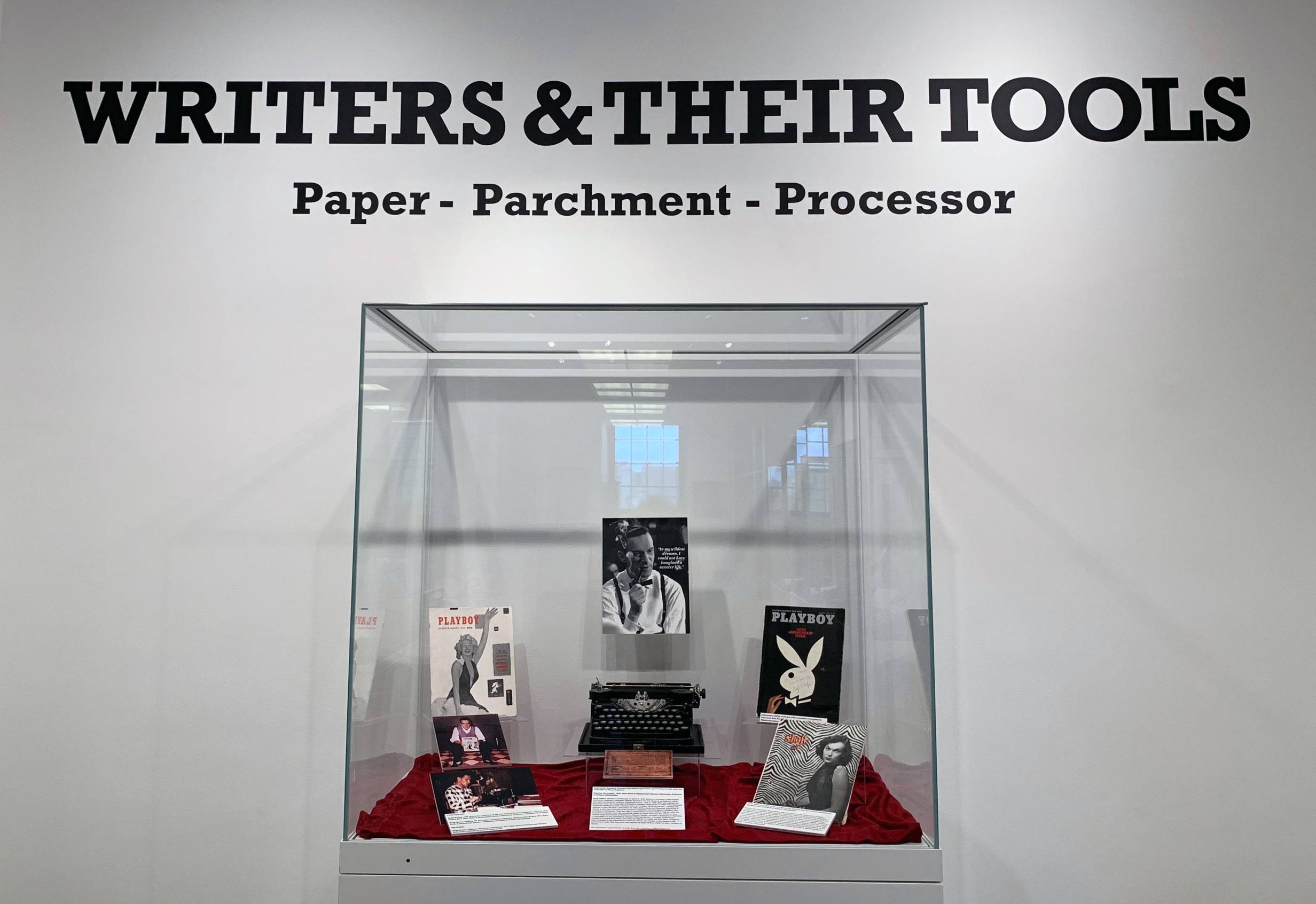
I also wanted to take the time to show that it wasn’t just typewriters. That writing is more than just typing on the page. That’s how the tools case came about. That one ranges from very early parchment, quill, and vellum manuscripts all the way up to digital processors. We even have the hard drive from the collection in there.
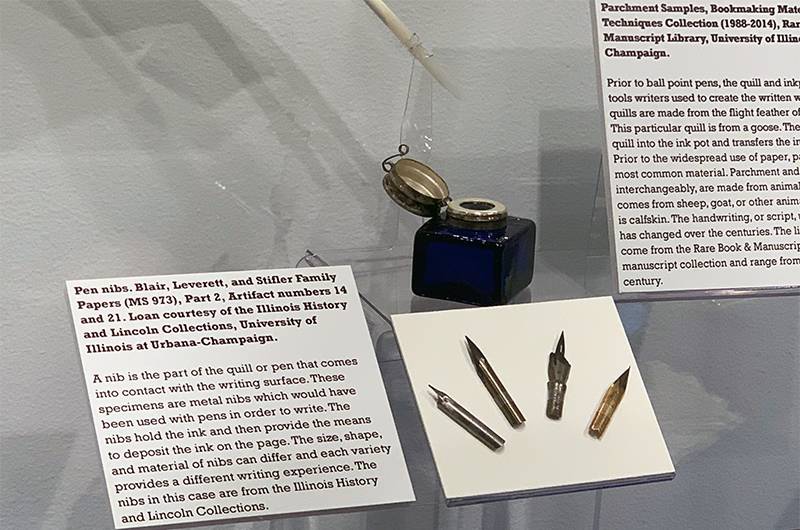
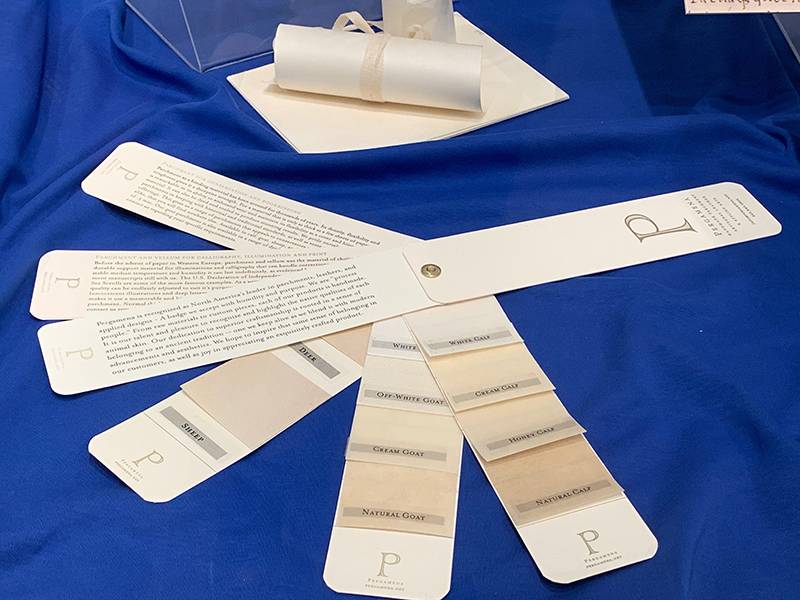
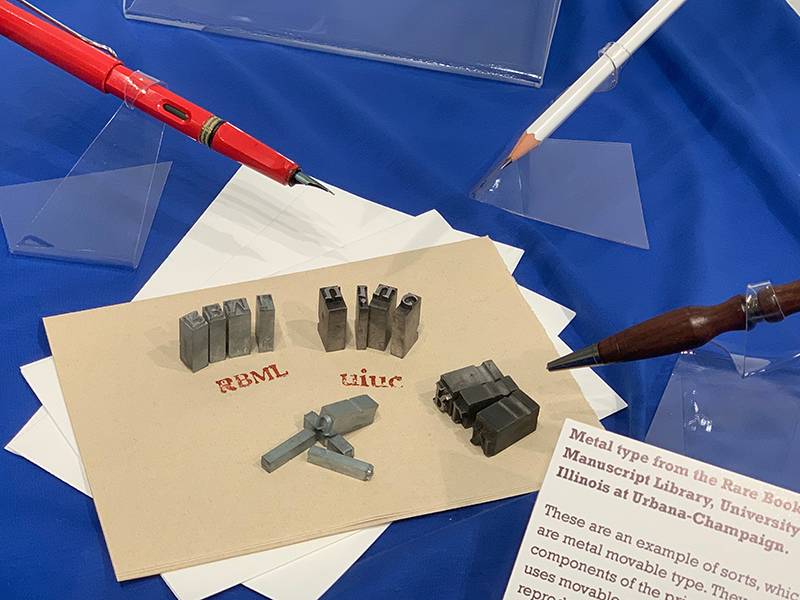
SP: With the focus on instruments and tools, how is text used in the exhibit?
Miller: In the {Carl} Sandberg case, that typewriter was used to type Homefront Memo, so I included the typed manuscript and the final book as well. The same thing goes for the Hugh Hefner case. The first issue of Playboy, one of the anniversary editions, and Shaft, the student publication he was active in when he was on Campus.
SP: What suprised you the most during the curation process?
Miller: There were a lot of surprises. Condition, for some of the typewriters, really surprised me. Even more so now that our conservators dusted and repaired them. They’re in fantastic shape. The Yiddish typewriter was a fantastic surprise. I was really excited when I found that one. I hadn’t realized that they had made typewriters exclusively for Yiddish {Yiddish typewriters have more keys than Hebrew typewriters because there are more accents}.
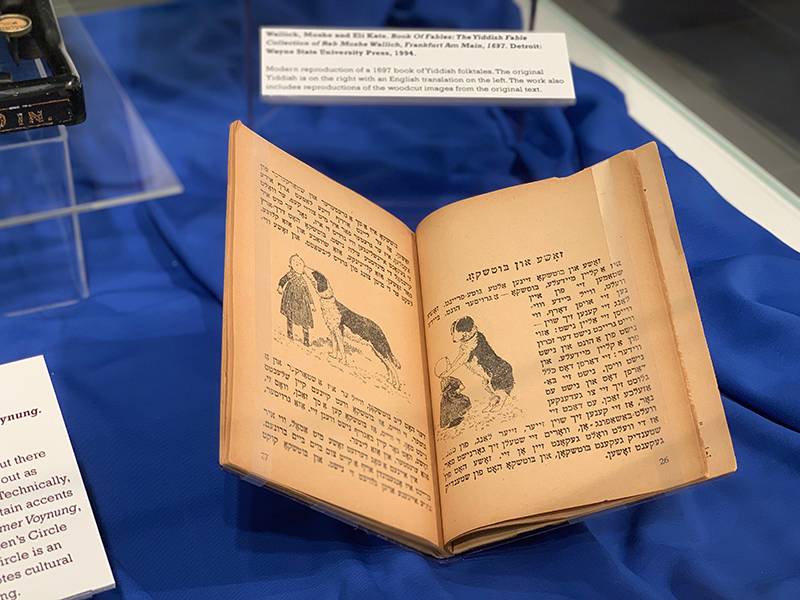
SP: I’m curious, how did the Yiddish typewriter arrive here?
Miller: It’s a gift from the Van Cort Workman’s Circle. They’re located in the Bronx, New York. It arrived in 2000. The Yiddish typewriter, both of James Jones’ typewriters, and the Sandberg typewriter were already parts of the collection.
SP: We’re about halfway through the exhibition’s duration, what has the response been so far?
Miller: Many of the large groups that are participating in events on Campus have stopped in. Some of our researchers have taken the time to look through as well. It’s been interesting. Everyone really likes the objects, and thinking about libraries as something more than books. When we were putting the exhibit together, there were undergraduates in who had never even had typewriters on their radar. So it was nice to be able to introduce them to this different way of doing things.
One of the things I like to point out to people who are unfamiliar with typewriters is In the James Jones case. In his case is the typescript for From Here to Eternity. It’s a huge stack of pages. It’s just over 1,000 pages of typed manuscript. For people who’ve only learned how to write on processors, or only in Microsoft Word, looking at that stack of papers means something completely different. It’s a tangible reminder of what it meant to type on these things. And of course, you had to keep all those pages in order.
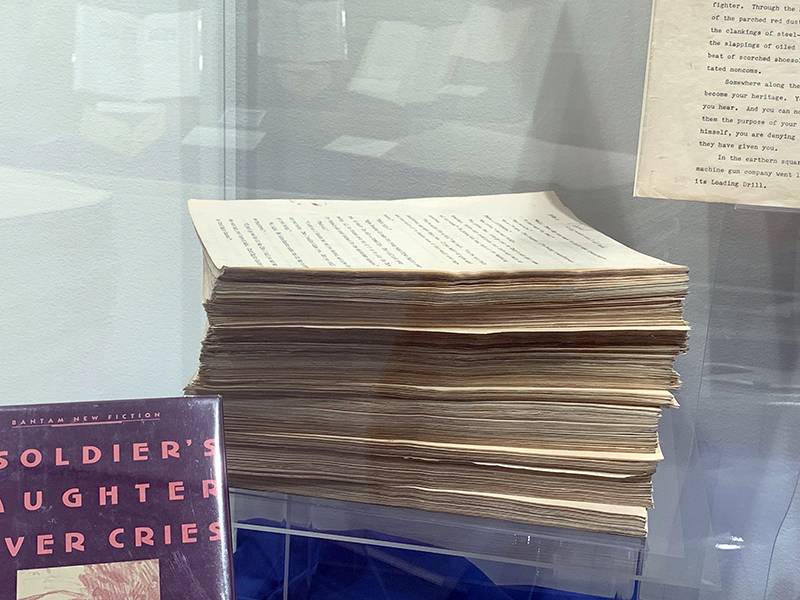
SP: What are you working on after this?
Miller: I’m also working with a group of curators on the Spring 2020 exhibit. It’s still in the planning stages, but it has a travel theme.
We have an exhibit every semester, so the one for fall has been curated by our conservators. It looks really good. They’re taking a look at the objects from the conservators point of view. How they fix the books and the different part of their process. From I’ve seen, it’s a very visually appealing exhibit.
SP: I’d imagine that being a library conservator is one of those fields where when the work is done well it’s almost invisible. It sounds like both an art and a science. I’m really looking forward to both of those upcoming exhibits.
When I asked Ruthann if there was one particular thing she really wanted to you to know about this exhibit, and about the Rare Book and Manuscript Library it was this.
“The materials the exhibit are a good indication of what our collection has to offer. It’s a pretty wide ranging collection. And if people are interested, we are always happy to have people stop in and look at the exhibit, and also the collection. We are an open access collection. We ask that people register so that they can access the materials, but you do not need to be affiliated with the University to look at materials in the reading room. If there are community members who would like to come in and look at the papers of H.G. Wells, which we have, they are more than welcome to do that. Everyone is invited. There’s something here for everyone.”
There is so much of our local history to enjoy in this exhibit. Pages from issues of the Daily Illini that Roger Ebert wrote and edited. A copy of Hugh Hefner’s undergrad mag, Shaft, a clear ancestor of Playboy, and the Underwood warantee card, completed in his hand, listing his Urbana address. Whether you’re driven by your love of all things Ebert, your curiosity about the mythic Hefner, your love of old typewriters, or a simple desire to linger a while in a piece of analog heaven, make your way over to the Rare Book and Manuscript Library.
“Writers & Their Tools: Parchment – Paper – Processor ” is a gem of an exhibit. Multifaceted, rare, and rich with layers of historical, cultural, and artistic insight, it is another shining example of what wonders await us right here at the University of Illinois Library. An hour spent among tactile realia is a welcome visceral antedote to today’s emphemeral digital discourse.
It’s summer and that means Campus is easier to navigate than ever. So no excuses. Experience this exhibit before it’s gone. And come back to take Ruthann Miller up on her offer to explore the wide range of jewels in the Rare Book and Manuscript Library’s collection.
Writers & Their Tools: Parchment – Paper – Processor
The University of Illinois Rare Book & Manuscript Library
346 Main Library
1408 W Gregory Dr, Urbana
Through August 30th
Top photo from Facebook event page. All other photos from Debra Domal








